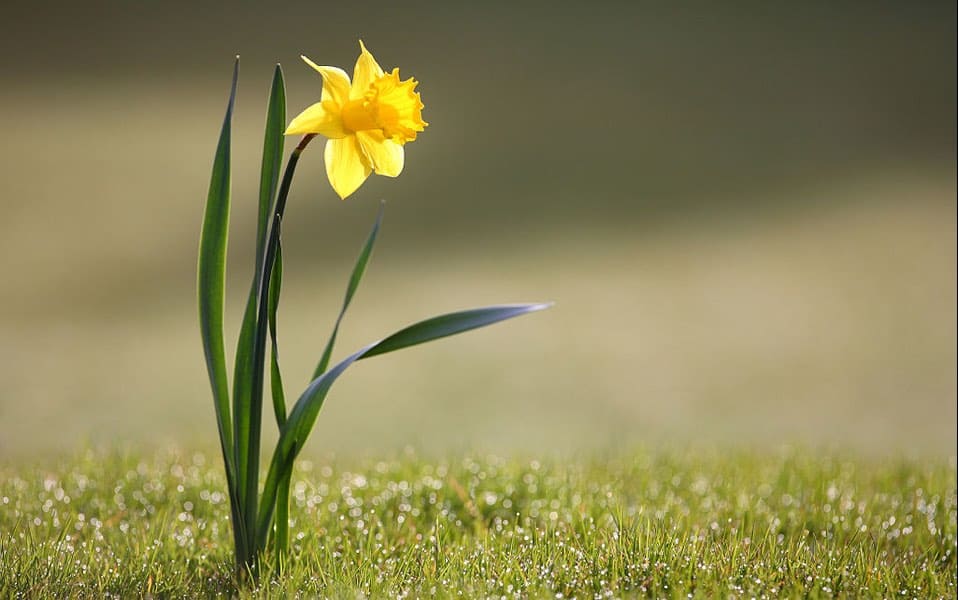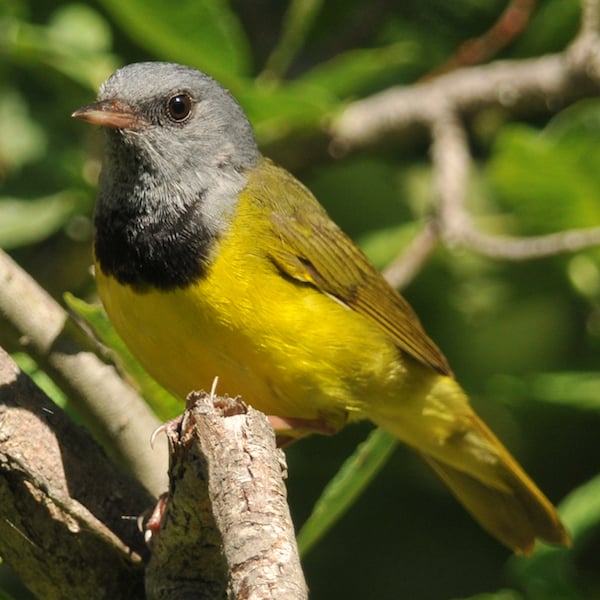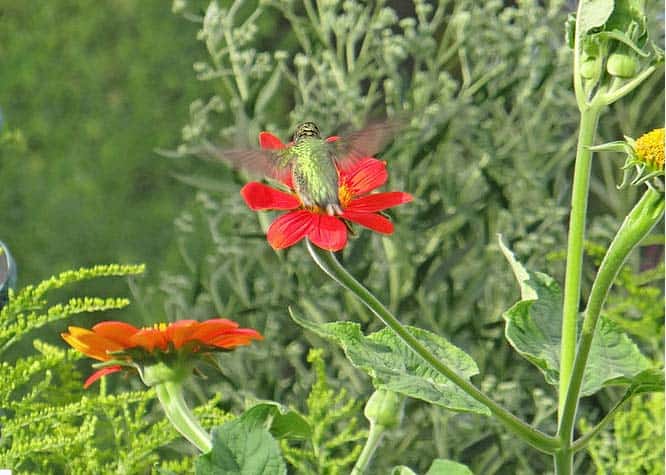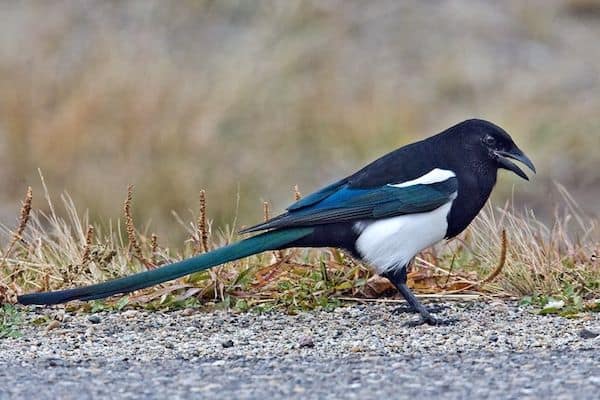When the winter weather breaks, get outside to look for signs that spring is on its way!
Most people can’t wait for spring to arrive, and backyard bird watchers seem especially eager for the Earth, on its annual trek, to lean closer to the sun. This subtle planetary realignment will bring warmer weather in the next few months to those of us in the northern hemisphere. Warmer weather brings us many of our favorite things: birds, flowers, butterflies, and best of all, an end to being cooped up inside the house during the worst of the winter weather: bitter temperatures, deep snow, ice, sleet, or just dreary, gray skies.
When the winter weather breaks, it’s time to get outside to look for other hopeful signs that spring is on its way. In honor of those first tentative steps we take out the weather-proofed door, squinting skyward at the bright yellow orb we thought had deserted us, here are my Top Ten Backyard Signs of Spring. Please forgive me if your backyard does not have all 10 of these signs. Look on the bright side: Winter is almost over! Spring is nearly here!
10. Songbird songs. The first species that often turns up is a tufted titmouse singing Peter, Peter, Peter in our orchard on a sunny Sunday afternoon in late January. His song is an early aural reminder that winter will eventually fade. After that I often hear house and purple finches, white-breasted nuthatches, song sparrows, and northern cardinals.
9. Woodpeckers drumming. On our farm we hear woodpeckers drumming in early spring and it continues until the following fall. Woodpeckers use drumming both as a territorial announcement and as a part of spring courtship. Some suburban woodpeckers have discovered the great resonance of chimney flues and drainpipes, much to the dismay of slumbering human homeowners. Among our drummers are pileated, red-bellied, hairy, and downy woodpeckers, and northern flicker. Yellow-bellied sapsuckers tap our birch trees each spring but do not stick around to breed. And red-headed woodpeckers (my favorite birds) nest in a small colony just a couple of miles away. We try to lure the red-headeds to our property with ears of corn, and it results in a few, too-short visits.
8. Clumps of raptors/pairs of raptors. Around this time red-tailed hawks may make an appearance. Some of these are our local year-round residents, some are winter visitors, and some are birds of passage, returning north to set up territories, having spent the winter to the south of us. Late winter and early spring are excellent times for raptor watching. Many of our resident red-tailed and red-shouldered hawk pairs are already courting each other, complete with acrobatic flights, dives, and piercing screams.
7. Owls hooting. Hawks aren’t the only raptors making noise. Our evenings are punctuated with hoots from great horned and barred owls. If we listen carefully at dusk we can hear eastern screech-owls whinnying far off in our east woods. Owls can be hard to hear if you don’t get outside to listen. Late winter is the best time to catch the concert of hoots, because many owl species are setting up territories and starting the breeding cycle. Spend an hour outside right at dusk, listening quietly, and you might tune into a little night music.
6. Tree and flower buds. Our water maples and red maples are the first trees to show signs of budding. In a few weeks the bare, leafless branches will offer a reddish glow—the effect created by the thousands of growing red buds at the end of every twig. Soon every living tree in our woods will be about to burst into leaf. When the budding is at its fullest, we know the blue-gray gnatcatchers will be here soon.
5. Duck flights. As northern lakes and rivers begin to open up, we get skeins of ducks coming up the Ohio River Valley. It’s so exciting to take a Sunday drive along the rivers and past the ponds in our area, because each one offers a chance to see the first stunning drake bufflehead, ring-necked duck, or even a northern pintail. Our first spring ducks are often the hardy mallards and black ducks, followed closely by the impressive wood ducks. One of these years we hope to put in a pond on our property, so we might lure some waterfowl to stop and rest.
4. Juncos leaving. Though we’ll have a few with us until early May, by late February, our junco numbers are slowly dwindling. I’m always fascinated by these little grayish wonders that seem to be with us no matter how bad the weather, all winter long, scratching out seed bits from under our feeders. This species is a notable “get” for our spring Big Day list in early May (when a late-lingering junco may visit our feeder) and for our Big Sit day in early October (when the first junco of winter magically appears at our feeders). Before they leave, our juncos sing and jostle around our yard with increasing intensity, practicing for the coming breeding season.
3. Peepers. One night around this time, I’ll hear that high-lonesome sound of spring. No it’s not a Bill Monroe bluegrass ballad, it’s the evening chorus of spring peepers—those tiny cold-hardy amphibians that sing from every wet patch of ground in the woods. Peepers start vocalizing so early in spring they might be more accurately called late-winter peepers. Hearing them lets us know that the ground is thawing and the springs are starting to flow.
2. That spring smell. I love to inhale the earthy spring smell that the land produces in late February and early March. It’s equal parts rain and soil, grass and ozone, creating a perfume that no amount of chemical wizardry can replicate. These days at dusk, you’re likely to find me standing in the front yard, nose pointed skyward, eyes closed, breathing deeply. It’s heaven.
1. Woodcock. It’s often when I’m smelling the spring air, or listening to the first spring peepers, that I hear the first peent! of our American woodcock male. He’s a tough old coot, often starting his spring performances when there’s still snow on the meadow and ice in the valleys. But he knows that the early male woodcock gets not only the earthworms, but also the gals. We cherish the evenings we spend listening to his nasal calls and watching his silhouette against the pink western horizon as he spirals skyward and twitter-tumbles back to our old meadow. Of all the signs of spring we see each year, he’s our favorite.
Bill Thompson, III, was the team captain for Bird Watcher’s Digest until his death on March 25, 2019. So much of what he wrote is timeless and remains informative, helpful, and inspiring.





what a beautiful article! thank you so much.